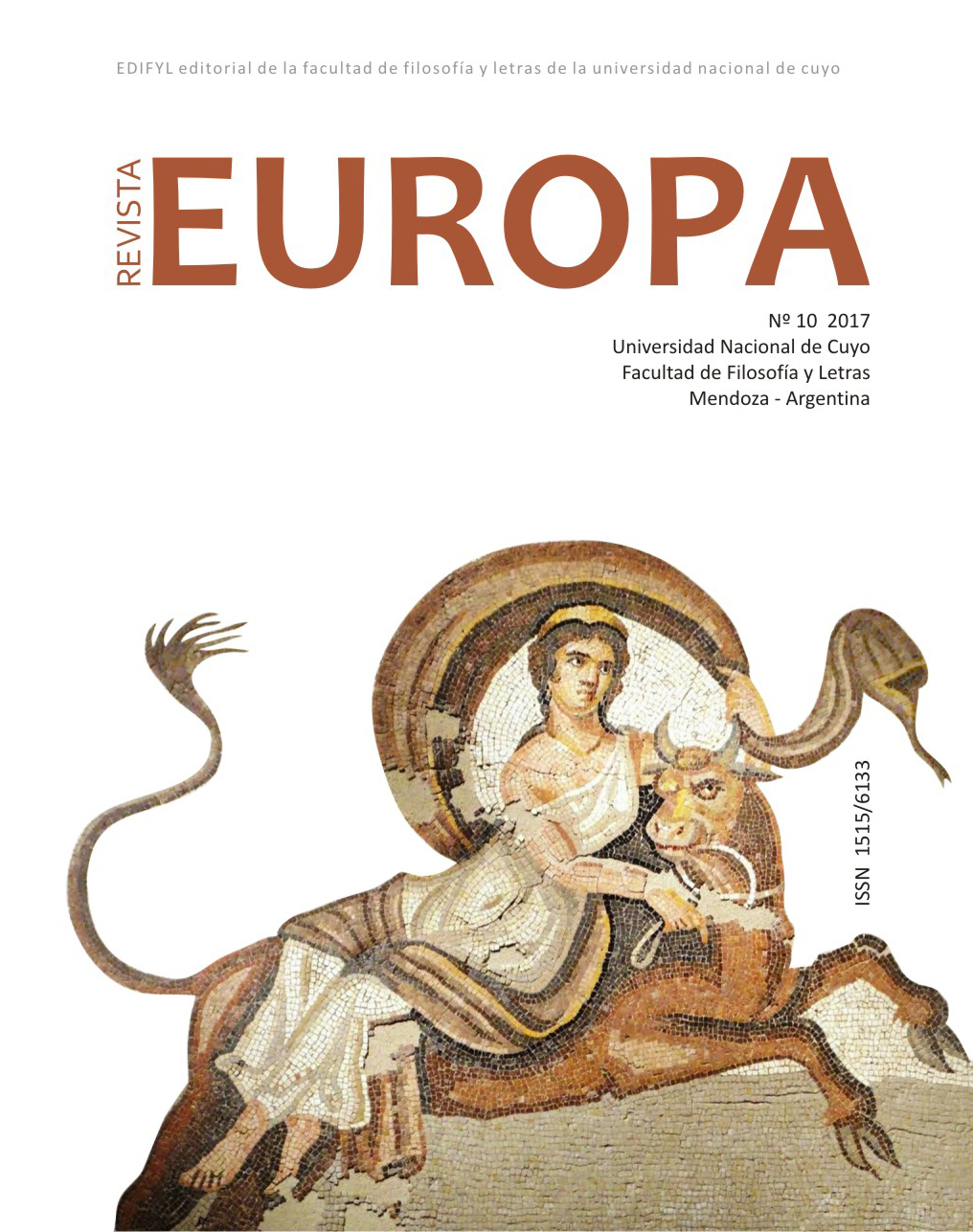Vienna: of the walled town on the Ringstrasse
Keywords:
Urbanism, 19th century, Vienna, ParisAbstract
In the first century, the Romans established a fortified camp along the Danube River, as a strategic element for the defense of the limits of the empire. It was the beginning of the vocation of the city of Vienna, which will be an important military center during the Crusades and key bastion to resist the attacks of the Turks in 1529 and 1683. After these dates, the city began to spread outside the walls, leaving a belt of about 600 meters wide, between the old town surrounded by ramparts and the new city. During the 19th century, under the Emperor Francis Joseph, in the old firing range, it builds a wide boulevard, the Ringstrasse. This urban space, where are located the main public buildings of Vienna and a considerable amount of private palaces, is a material manifestation of art that emerges in times of peace. The same is carried out by following a modernization plan inspired by the reforms implemented by Napoleon III in the city of Paris. In this work, a comparison shall be made between the criteria used in the urban reforms and other capital, trying to point out the elements that contribute to give identity to the city of Vienna.
References
BRYCE, Trevor (1998), El reino de los Hititas. Madrid: Ed. Cátedra.
CLINE, Eric (2008), "Troy as a ‘contested periphery’: archaeological perspectives on cross-cultural and cross-disciplinary interactions concerning bronze-age Anatolia", en Collins, Billie Jean, Bachvarova, Mary & Rutherford, Ian (eds. ), en Anatolian Interfaces: Hittites, Greeks and their Neighbours. USA: OxbowBooks, pp. 12-20.
CHADWICK, John (1977), El Mundo Micénico. Madrid: Ed. Alianza.
DICKINSON, Oliver (2010), El Egeo. De la Edad del Bronce a la Edad del Hierro. Barcelona: Ed. Bellaterra.
------------------------(2000), La Edad del Bronce Egea. Madrid: Ed. Akal.
DRIESSEN, Jan (1999), "The archaeological of aegean warfare", en Laffineur, Robert (ed.), Aegaeum 19. Annales d’archéologieégéenne de l’Université de Liège. Liège: Université de Liège. Pp. 11-20.
FINLEY, Mosses (1978), El Mundo de Odiseo. España: Ed. F. C. E.
FRENCH, Elizabeth (2005), Micenas. Capital de Agamenon. Barcelona: Ed. Bellaterra.
GEORGANAS, Ioannis (2017), "Warrior Graves" vs. Warrior Graves in the Bronze Age Aegean, in Horn, Christian& Kristiansen, Kristian, Warfare in Bronze Age Society. Cambridge: Cambridge UniversityPress, p. 209-218.
GONZÁLEZ GARCÍA, Francisco J. (1991), A través de Homero. La cultura oral de la Grecia antigua. España: Universidad de Santiago de Compostela.
KORFMANN, Manfred (2005), "Troya a la luz de las nuevas investigaciones", en Revista del Instituto de Historia Antigua Oriental Nº 12 (RIHAO 12). Buenos Aires: Facultad de Filosofía y Letras, Universidad de Buenos Aires, pp. 11-73.
MEGGIT, Mervin (1977). Blood is their Argument. Warfare among the Mae Enga Tribesmen of New Guinea Highlands, Palo Alto: Mayfield.
NIEMEIER, W. D. (1998), "The Mycenaeans in Western Anatolia and the Problem of the Origins of the Sea Peoples", en Gitin, Seymour, Mazar, Amahai & Stern, Ephraim (eds.), Mediterranean Peoples in Transition. Jerusalem: Israel Exploration. Pp. 17-65.
OSBORNE, Robin (1998), La formación de Grecia. 1200-479 a. C., Barcelona: Ed. Crítica.
STARKE, Frank (2006), "Los hititas y su Imperio. Constitución, federalismo y pensamiento político", en Revista del Instituto de Historia Antigua Oriental 13 –RIHAO 13-. Buenos Aires: Facultad de Filosofía y Letras, Universidad de Buenos Aires, pp. 189-303.
VANDKILDE, Helle (2006), "Archaeology and War: Presentations of Warriors and Peasants in Archaeological Interpretations", en Otto, Ton, Thrane, Henrik&Vankilde, Helle, Warfare and Society. Archaeological and Social Anthropological Perspectives. Denmark: Aarhus University Press. Pp. 57-73.
WARBURTON, David, (2006), "Aspects of War and Warfare in Western Philosophy and History", en Otto, Ton, Thrane, Henrik&Vandkilde, Helle, Warfare and Society. Archaeological and Social Anthropological Perspectives. Denmark: Aarhus University Press. Pp. 37-55.
WIENER, M. (2007), "Homer and History: old questions, new evidence", en Morris, Sarah &Laffineur, Robert (eds.), Aegaeum 28. Annales d’archéologie égéenne de l’Université de Liège. Liège: Université de Liège, pp. 3-33.
Downloads
Published
Issue
Section
License
Quienes envíen trabajos a la Revista EUROPA, que edita la Asociación de Estudios Interdisciplinarios sobre Europa (ADEISE) de la Facultad de Filosofía y Letras de la Universidad Nacional de Cuyo (Mendoza, Argentina), otorgan automáticamente licencia no exclusiva y sin límite temporal de su manuscrito a dicha publicación. En consecuencia, como la distribución de la citada Revista no tiene finalidad lucrativa sino académica, el autor (los autores) autoriza(n) a la misma la difusión gratuita en formato impreso y medios electrónicos, tanto en red local como por vía internet.
Se establece que:
- Los/as autores/as conservarán sus derechos de autor y garantizarán a la revista el derecho de primera publicación de su obra.
- Los/as autores/as deben adherir a la la Licencia Creative Commons Atribución-NoComercial-CompartirIgual 4.0 Internacional, mediante la cual el autor permite copiar, reproducir, distribuir, comunicar públicamente la obra sin propósitos comerciales, por cualquier medio o formato. También, se pueden generar nuevas obras derivadas, siempre y cuando se cite y reconozca al autor original y su primera publicación en esta revista.
- Los/as autores/as podrán adoptar otros acuerdos de licencia no exclusiva de distribución de la versión de la obra publicada (p. ej.: depositarla en un archivo telemático institucional o publicarla en un volumen monográfico) siempre que se indique la publicación inicial en esta revista.
- Se permite y recomienda a los/as autores/as difundir su obra a través de Internet (p. ej.: en archivos telemáticos institucionales o en su página web) luego de su publicación, lo cual puede producir intercambios interesantes y aumentar las citas de la obra publicada. (Véase El efecto del acceso abierto).




